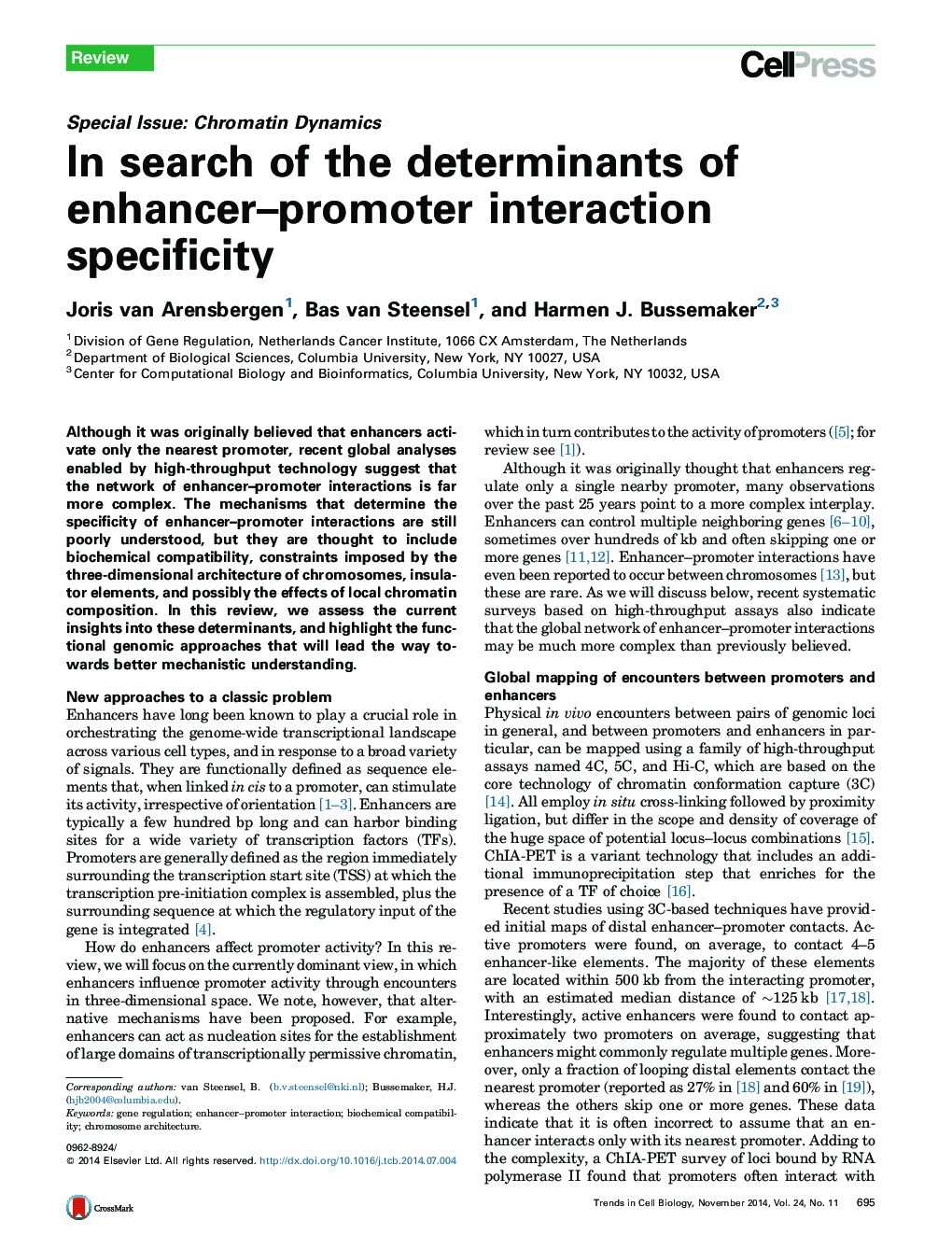| Article ID | Journal | Published Year | Pages | File Type |
|---|---|---|---|---|
| 2204390 | Trends in Cell Biology | 2014 | 8 Pages |
•Enhancers can interact with distal promoters in a highly selective manner.•High-throughput technologies enable global mapping of these interactions.•Selectivity mechanisms range from biochemical compatibility to 3D chromatin structure.•We discuss future experiments towards a more complete understanding of these issues.
Although it was originally believed that enhancers activate only the nearest promoter, recent global analyses enabled by high-throughput technology suggest that the network of enhancer–promoter interactions is far more complex. The mechanisms that determine the specificity of enhancer–promoter interactions are still poorly understood, but they are thought to include biochemical compatibility, constraints imposed by the three-dimensional architecture of chromosomes, insulator elements, and possibly the effects of local chromatin composition. In this review, we assess the current insights into these determinants, and highlight the functional genomic approaches that will lead the way towards better mechanistic understanding.
